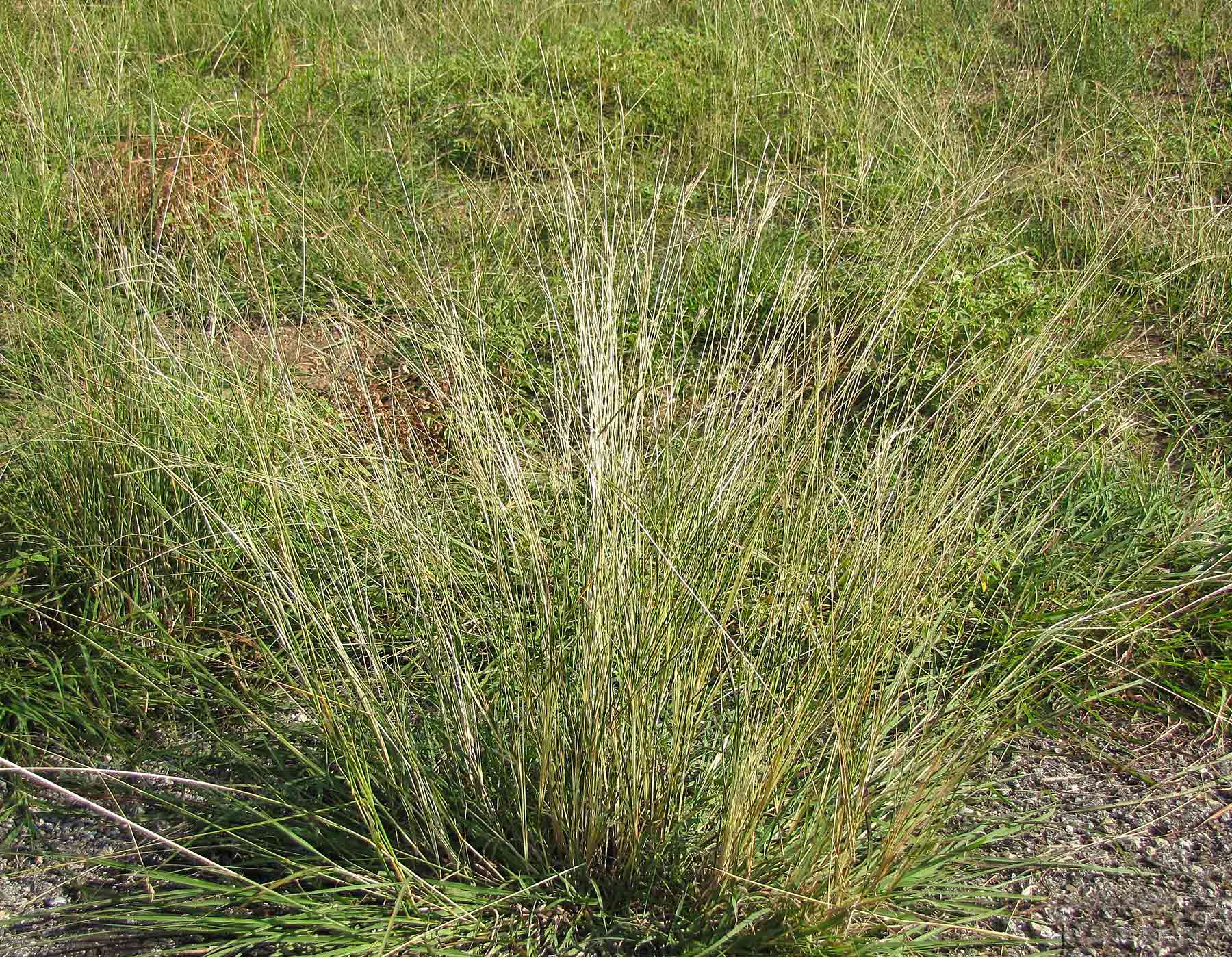Two species are considered Old World bluestems:
- Caucasian bluestem (Bothriochloa bladhii), a warm-season perennial grass native to subtropical Asia and Africa
- Yellow bluestem (B. ischaemum), native to southern Europe and Asia.
Both bluestems were brought to the United States in the early 1900s as a forage grass and as erosion control. These grasses are less palatable to cattle than our native warm-season grasses and not as nutritious, but their use is promoted due to their ability to withstand close grazing. They have proven, however, to be highly invasive in neighboring states, and their use should be strongly discouraged.
Caucasian bluestem has currently escaped cultivation in at least eight counties in Missouri. It is also found in neighboring Kansas and Oklahoma, as well as other southern states.
Yellow bluestem has been documented to be escaping in Howell County, and is likely found in other counties. It has also escaped in Kansas, and throughout the southern United States. In spite of its invasive nature, yellow bluestem sometimes is recommended to Missouri cattle ranchers.
How They Spread
Both of these grasses are spread by root and seed. How long their dormant seed remains viable in the seed bank is unknown. Because foragers and grazers prefer native grasses, the old world bluestems have a competitive advantage and are more likely to take over habitats. They can also cause an altered carbon-to-nitrogen ratio that inhibits the growth of native plants.
Effect on Natural Areas
Both old world bluestems have been shown to alter soil function and biota, thereby suppressing the growth of native grasses. They form much thicker sod than native grasses, making them unsuitable for quail nesting or cover. They can move from disturbed roadsides and pastures to high-quality prairie and glade habitats and are difficult to eradicate once established. Dr. Walter Fick of Kansas State University warns that if left uncontrolled, they have the potential to completely take over our native grasslands.

Studies are ongoing to find an effective control for old world bluestems. They are well adapted to spring burning and will tolerate repeated mowing better than our native bluestem grasses. There are no known biological controls.
Herbicide Treatment
Chemical application, therefore, has shown to be the only effective method of control at this time.
Glyphosate (2 to 4 lbs. per acre) is reasonably effective, but treatments must be repeated, and glyphosate also kills native grasses and vegetation. Imazapyr (1 to 1.25 lbs. per acre) has been shown to be effective, and native grasses show more tolerance to it than to glyphosate.
To prevent collateral damage to native vegetation, early detection and eradication of old world bluestems is extremely important. Reseeding with native grasses following treatment may be necessary.
Use Alternative Native Plants
Big bluestem and little bluestem are both natives that can be planted instead of Old World bluestems.





















